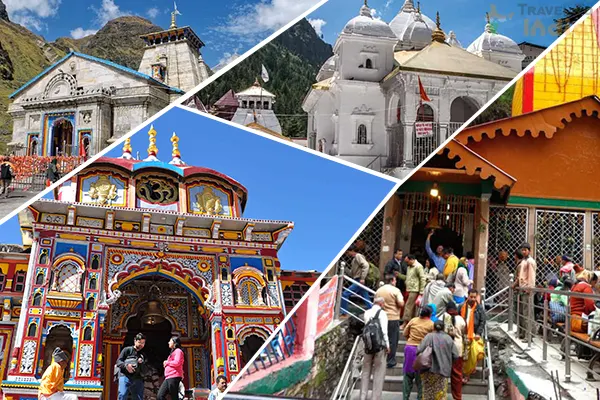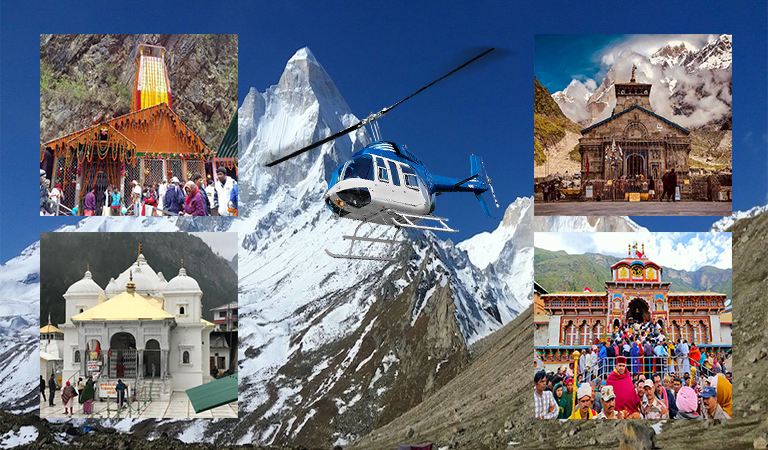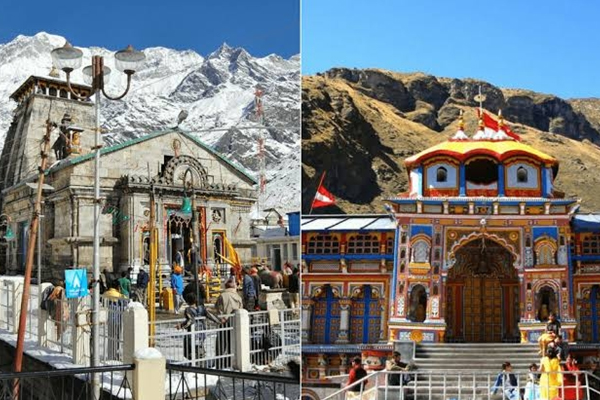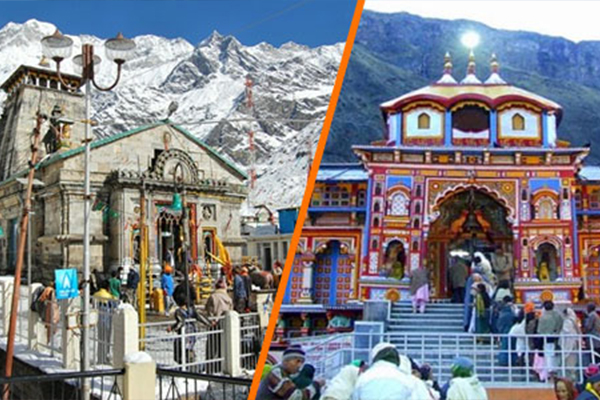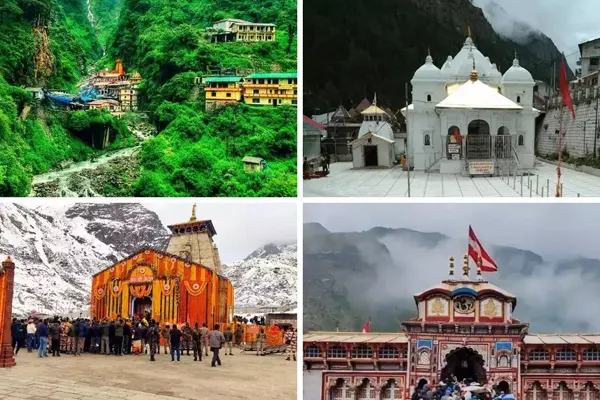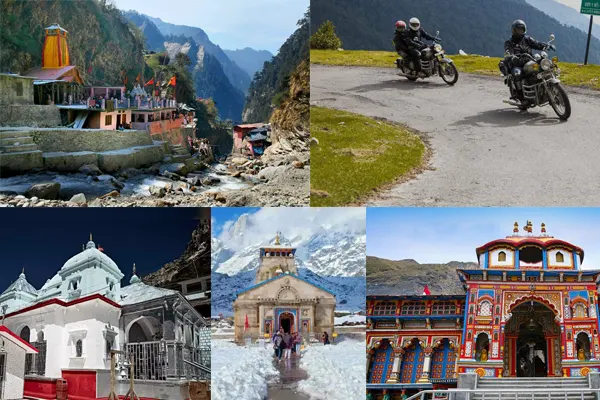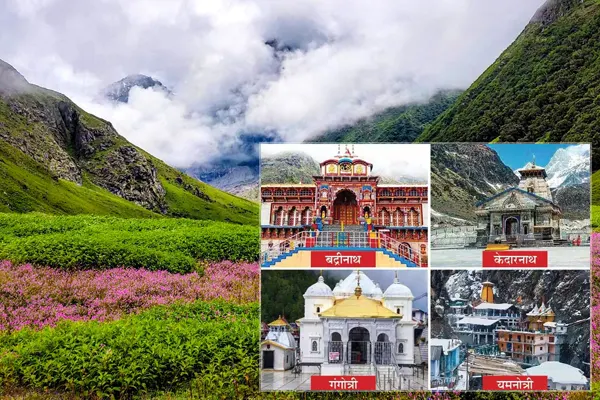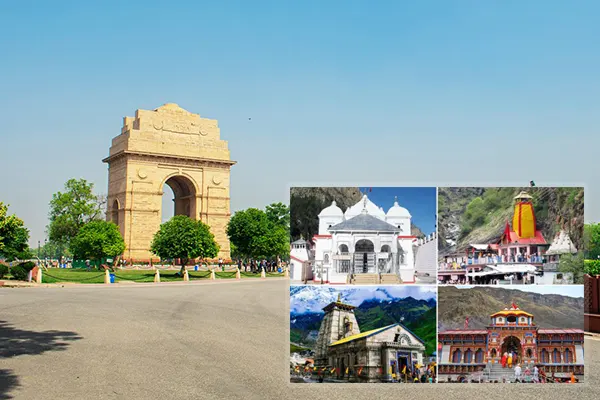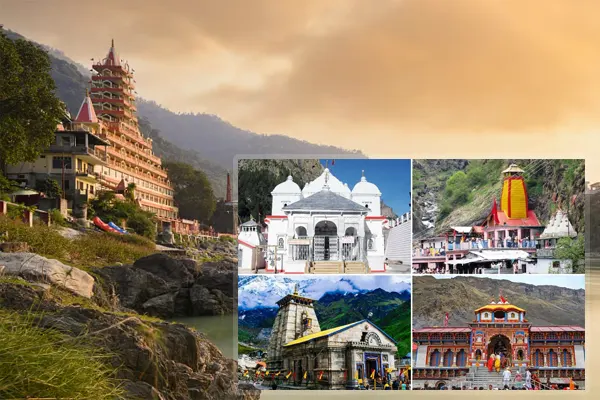Char Dham Yatra 2026
The Char Dhams are four places in India that have immense importance in pilgrimage. These four places are Badrinath, Kedarnath, Gangotri and Yamunotri. These four Dhams or ancient temples also represent the spiritual source of four holy rivers: Yamuna River (Yamunotri), Ganga River or Ganges (Gangotri), Mandakini River (Kedarnath) and Alaknanda River (Badrinath). The Char Dham Yatra was started by the eighth century Indian philosopher and saint Adi Shankaracharya to unify Hindu beliefs and traditions across India. This holistic journey is one of the most sacred places that a Hindu must visit at least once in a lifetime. The origin of these four temples is still not known and remains a mysterious fact. These four Hindu temples are spread across the four corners of India. There is the Badrinath Temple in the north, the Jagannath Puri Temple in the east, the Dwarkadhish Temple in Dwarka in the west and the Ramanathaswamy Temple in Rameswaram in the south. Hindu pilgrims consider it pious to visit these four holy temples by traveling across India. They believe that their religion demands that they must visit these places at least once in their lifetime.
The traditional method of this journey is that the journey starts from the east or Puri and then moves upwards in a clockwise direction. If we talk geographically, we can see that these places are more or less in a perfect square and are located on the same latitude or longitude. According to your budget, Travel To India provides different types of Char Dham Yatra packages, after booking the rest of the journey is our responsibility. Before Char Dham Yatra we prepare the map of Char Dham which helps you in the rest of their journey. So, Char Dham Yatra plays an important role in the life of Hindu pilgrims.
Yamunotri: Source of River Yamuna and abode of Goddess Yamuna.
Gangotri: Origin of River Ganga and home to Goddess Ganga.
Kedarnath: One of the 12 Jyotirlingas of Lord Shiva.
Badrinath: Dedicated to Lord Vishnu, part of the Char Dham (Hindu pilgrimage circuit).
These shrines are not only religious sites of India but also reflect the incredible natural beauty and cultural heritage of the Indian Himalayas.
Char Dham Yatra Places
1. Yamunotri Dham (Altitude: 3,293 m)
The Holy Origin of the Yamuna River
Yamunotri, the initial among the four Dhams in the Char Dham Yatra, is located in the western Garhwal Himalayas of Uttarkashi district, Uttarakhand. It is the birthplace of the sacred Yamuna River, which has great importance in Hindu mythology. The temple here is that of Goddess Yamuna, daughter of Surya (the Sun God) and sister of Yama (the God of Death). Bathing in the waters of the Yamuna is thought to cleanse one of the fear of death and wash away all sins. Yamunotri Temple, initially constructed by Maharaja Pratap Shah of Tehri Garhwal, is located on the left bank of the Yamuna. Pilgrims make a 6-km trek from Janki Chatti, going through beautiful landscapes, hot springs, waterfalls, and dense coniferous forests.
One of the special rituals performed here is steaming rice in the Surya Kund, a natural hot water spring, which is offered to the goddess and subsequently retaken as prasad. Warm water for ritual bath prior to darshan is also available from the Yamuna Bai Kund. Yamunotri is more than a physical journey; it is a spiritual one that demands determination and devotion. As much as it is away from the world, the serene and spiritual landscape makes it a special start to the Char Dham Yatra.
Best Time to Visit: May to June and September to early October
2. Gangotri Dham (Altitude: 3,100 m)
The Holy Birthplace of River Ganga
Situated in Uttarkashi district, Uttarakhand, Gangotri Dham is the second destination on the Char Dham Yatra and is the source of River Ganga, which is the holiest river in Hinduism. The Gangotri Temple, which is built in the honor of Goddess Ganga, is situated at an elevation of 3,100 meters on the banks of the Bhagirathi River. It is said in Hindu mythology that King Bhagirath did intense penance here to get the heavenly river Ganga to descend on the earth to cleanse the souls of his ancestors. Impressed by his faith, Goddess Ganga came down from the heavens, and Lord Shiva held her in his matted locks to soften her wild flow before letting her down on the earth. Therefore, the river here comes to be called Bhagirathi till it meets Alaknanda at Devprayag to create the Ganga.
The white granite temple of Gangotri, constructed in the 18th century by Amar Singh Thapa, is plain but highly spiritual. The temple is opened annually on Akshaya Tritiya and closed on Diwali. Gaumukh, the real glacier source of the river, is nearby, situated around 18 km uphil—a favorite trek among the adventurous. The white mountains, glaciers, and alpine woods surrounding Gangotri present a serene environment, making it a unique place for both spiritual introspection and natural scenery.
Best Time for Visit: May-June and September-October
3. Kedarnath Dham (Altitude: 3,583 m)
The Majestic Home of Lord Shiva
Kedarnath, which is among India's most holiest dhams, is dedicated to Lord Shiva and is among the 12 Jyotirlingas. Kedarnath is the third dham in the Char Dham Yatra and is situated in the Rudraprayag district of Uttarakhand, close to the head of the Mandakini River and amidst snow-capped mountains. Legend has it that the Pandavas, after the war at Kurukshetra, asked Lord Shiva for salvation. The Lord dodged them and took the form of a bull to hide from them. He vanished into the ground at Kedarnath, leaving behind his hump. It is said that the Kedarnath temple was constructed over that holy location. Shiva's other limbs materialized at the other Panch Kedar temples.
The temple, built by the Pandavas and rebuilt by Adi Shankaracharya, stands as an architectural wonder, crafted from huge slabs of stone and durable enough to survive centuries of nature's fury and calamities. To travel to Kedarnath, one must do a 16 to 18 km trek from Gaurikund, but helicopter and pony or palanquin are available facilities for comfortable travel. The sight of the ancient temple with Mount Kedarnath looming behind is simply breathtaking and overwhelming. Since it is at high altitude, the temple is open only from May to November. Pilgrims are required to register and have medical fitness certificates because of challenging terrain.
Best Time to Visit: May to mid-June and September to October
4. Badrinath Dham (Altitude: 3,300 m)
The Eternal Seat of Lord Vishnu
Badrinath, the last of the Char Dham Yatra, is a most significant Vaishnavite shrine in India, which houses Lord Vishnu. Located in the Chamoli district of the state of Uttarakhand on the banks of the Alaknanda River, this peaceful pilgrim town is encircled by the towering Nar and Narayan mountain ranges with the snow-capped Neelkanth Peak providing a regal backdrop. Lord Vishnu is said to have meditated here in extreme weather conditions, and Goddess Lakshmi transformed herself as a Badri (berry) tree to protect him from the weather. The origin of the name "Badrinath" is therefore based on this myth. The prominent deity of the Badrinath Temple is a black stone image of Lord Badrinarayan in a meditation pose.
The temple is said to have been first founded by Adi Shankaracharya in the 8th century and rebuilt subsequently. Pilgrims pray to take a holy bath in the nearby Tapt Kund, a natural hot spring with healing properties, before seeking darshan at the temple. Badrinath is also part of the extended Char Dham Yatra, covering Badrinath, Dwarka, Puri, and Rameswaram, and thus holds significance in all schools of Hinduism. Apart from its religious significance, Badrinath is also noted for its stunning mountain vistas and serene atmosphere. Temple opens in late April or early May and shuts down in November, when the deity is shifted to Joshimath for winter worship.
Best Time to Travel: May to June and September to October
Char Dham Yatra 2026 Opening Dates (Tentative)
Char Dham Temples open every year in late April or early May. For 2026, the expected opening dates are:
Yamunotri Temple: April 30, 2026
Gangotri Temple: April 30, 2026
Kedarnath Temple: May 1, 2026
Badrinath Temple: May 2, 2026
Final dates will be confirmed on Basant Panchami and Maha Shivratri of 2026.
Char Dham Yatra 2026 Closing Dates (Tentative)
Temples close just after Diwali, usually by mid to late November. Tentative closing dates are:
Yamunotri: November 9, 2026
Gangotri: November 8, 2026
Kedarnath: November 10, 2026
Badrinath: November 11, 2026
Best Time to Visit Char Dham
The best time to visit Char Dham Yatra is from May to June, when the weather is good and the roads are clear or from September to October, which is also a good time to visit because the weather is clear, after the monsoon. It is better to avoid July and August months because of heavy rains and possible landslides and roadblocks in these places.
This Yatra season ends in November when the temples are closed, the temperature drops and snowfall starts at higher altitudes, making the trek more challenging and difficult, so avoid this month.
Char Dham Yatra Registration 2026
Registration is mandatory for all pilgrims at the sites of this Char Dham Yatra. You can register online or through authorized centers also you can book the Char Dham Yatra Tour Package with us and we will manage all the registration for you.
Required documents:
Valid ID Proof (Aadhaar, Passport, Voter ID)
Medical certificate (for senior citizens and those trekking to Kedarnath)
Travel To India, as the best Char Dham Yatra Travel company in India, offers assistance with registration, permits and documentation for a hassle-free experience.
Char Dham Yatra Route Map
Here’s the general travel routes for the Char Dham Yatra by road:
12-Day Char Dham Yatra Itinerary from Delhi
11 Nights / 12 Days
Delhi → Haridwar → Barkot → Yamunotri → Uttarkashi → Gangotri → Guptkashi → Kedarnath → Badrinath → Mana Village → Rudraprayag → Rishikesh → Delhi
10-Day Char Dham Yatra From Haridwar
9 Nights / 10 Days
Haridwar → Barkot → Yamunotri → Uttarkashi → Gangotri → Guptkashi → Kedarnath → Badrinath → Rishikesh
This traditional clockwise route (Parikrama) ensures you follow the spiritual path as per Hindu tradition. The route for Char Dham Helicopter Yatra remains different if you want to book the Char Dham Yatra by Helicopter. Contact us.
How to Plan a Char Dham Road Trip - Tips
Start Early: Book your Char Dham trip by early 2026 to secure preferred dates and hassle-free travel.
Choose Trusted Operators of India: Go with experienced Char Dham Tour providers like Travel To India for guided tours.
Travel Light & Smart: Pack warm clothes, trekking shoes, rain gear and medical kits for smart travel to Char Dham Yatra.
Acclimatize: Spend a day at higher altitudes before trekking to Kedarnath if you are not sure you can manage your breath at higher altitudes.
Stay Updated: Monitor weather and road conditions before booking or leaving, especially during the monsoon season.
Plan Your Route: Choose between a shared group tour or a private tour or a customized itinerary for Char Dham.

